1.10.2019
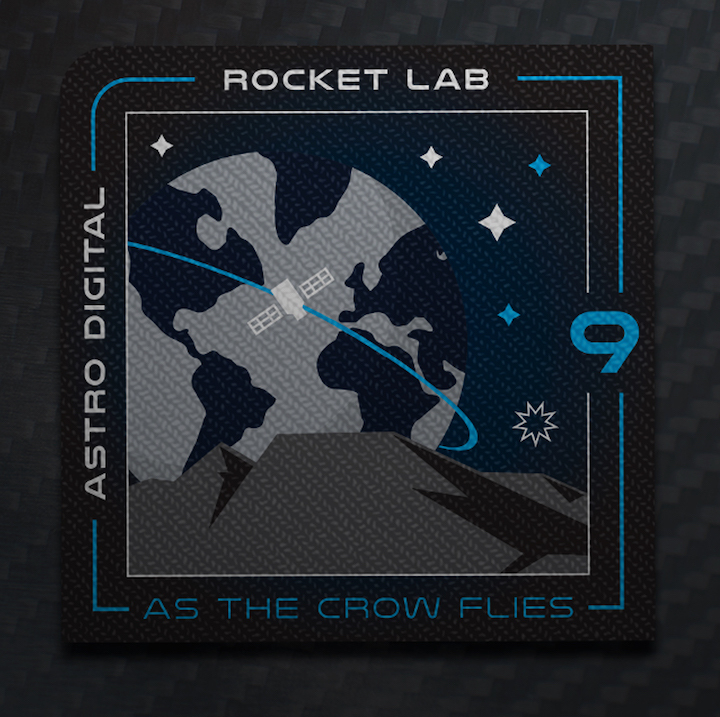
Huntington Beach, California. 30 September, 2019 – Rocket Lab, the global leader in dedicated small satellite launch, has today announced Astro Digital as the customer for Rocket Lab’s ninth Electron mission, and fifth mission of 2019.
The dedicated mission is scheduled to take place during a 14-day launch window opening on October 15 NZDT (14 October UTC). The mission will lift-off from Rocket Lab Launch Complex 1 on New Zealand’s Māhia Peninsula. Encapsulated in Electron’s fairing will be a single spacecraft for Astro Digital, a California-based satellite manufacturer and operator.
The mission is named ‘As The Crow Flies’ in a nod to Astro Digital’s Corvus Platform, which provides flexible and cost-effective solutions across a wide range of applications and mission profiles on bus variants ranging from 6U and 16U CubeSats to ESPA Class. Corvus is also a widely-distributed genus of birds which includes crows.
Rocket Lab’s Senior Vice President – Global Launch Services, Lars Hoffman, says the mission is a perfect example of the tailored, responsive and precise launch service sought by an increasing number of small satellite operators.
“We are honored Astro Digital has selected Rocket Lab as the launch provider for their dedicated mission. The Electron launch vehicle, with its unique Kick Stage, is perfectly positioned to provide the kind of tailored, rapid and responsive access to space that rideshare models simply can’t deliver,” Mr. Hoffman says. “With Electron and our own launch sites, Rocket Lab is uniquely placed to give small satellite operators complete control over their own launch schedule and orbital requirements.”
‘As The Crow Flies’ has been moved forward in Rocket Lab’s 2019 launch manifest, after a customer originally slated for launch in the coming weeks requested a later launch date. By manufacturing standard Electron launch vehicles, rather than rockets tailored to specific missions, Rocket Lab can facilitate rapid manifest changes that support the responsive needs of small satellite operators. Rocket Lab augments this flexibility by operating the world’s only private orbital launch range, providing small satellite customers with unmatched launch schedule control.
For real-time updates on Rocket Lab activities and for upcoming mission announcements, follow Rocket Lab on Twitter @RocketLab.
Quelle: RocketLab
----
Update: 16.10.2019
.
Rocket Lab preps for commercial satellite launch this week
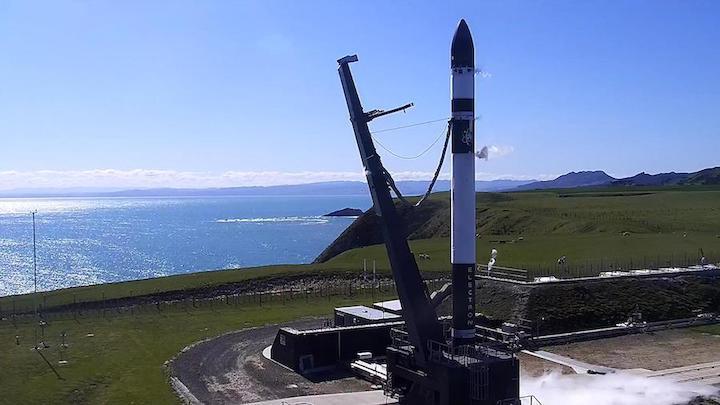
Rocket Lab’s fifth flight of the year is set for liftoff as soon as Wednesday (U.S. time) carrying a small experimental satellite to orbit for Astro Digital, a Silicon Valley company aiming to demonstrate technologies in space after an earlier focus on Earth observation.
The mission was delayed two days because of stormy weather at Rocket Lab’s launch site, located on Mahia Peninsula on New Zealand’s North Island.
The three-hour launch window opens at 0000 GMT Thursday (8 p.m. EDT Wednesday), or 1 p.m. Thursday in New Zealand, according to Rocket Lab. It will be Rocket Lab’s fifth launch of the year as the company seeks to ramp up to a monthly launch cadence, with a goal of launching every two weeks in 2020.
The payload for this week’s mission is a 16-unit CubeSat named Palisade owned and operated by Astro Digital, a company based in Santa Clara, California.
The Palisade spacecraft — about the size of a small suitcase — will ride Rocket Lab’s 55-foot-tall (17-meter) Electron booster into orbit.
The two-stage Electron launcher will deploy a Curie kick stage around nine minutes after liftoff. After flying over Antarctica, the Curie kick stage will fire its main engine to inject the Palisade spacecraft into its targeted orbit, followed by satellite separation around 71 minutes into the mission.
Airspace warning notices related to the launch suggest it will carry Palisade into a polar orbit, but the exact orbital parameters have not been released by Rocket Lab or Astro Digital. In a press kit for the launch, Rocket Lab said the Curie kick stage will “deploy the payload to more than twice the altitude reached by any Rocket Lab mission to date.”
The highest orbit achieved by Rocket Lab in its eight previous missions was around 335 miles (540 kilometers).
The unusual orbit targeted by this week’s mission illustrates the value of Rocket Lab’s dedicated smallsat launch service, said Peter Beck, the company’s CEO, in a recent interview with Spaceflight Now.
Beck said Rocket Lab has not made any pricing adjustments in the aftermath of SpaceX’s announcement in August of monthly rideshare launch opportunities for small satellites.
Starting early next year, SpaceX said it will make capacity available for secondary payloads on monthly Falcon 9 launches carrying the company’s Starlink broadband satellites into “mid-inclination” orbits.
Meanwhile, SpaceX plans to offer three dedicated launches to carry multiple smallsats into higher-inclination sun-synchronous orbit per year, beginning in 2020. Sun-synchronous orbit is a popular destination for Earth observation satellites.
On the sun-synchronous orbit missions, SpaceX will charge customers $1 million to launch a 440-pound (200-kilogram) payload. The Falcon 9 can deliver nearly 80 times more mass to sun-synchronous orbit than Rocket Lab’s Electron, according to data on NASA’s launch vehicle performance website.
Rocket Lab’s price for a dedicated Electron launch — carrying up to 330 pounds (150 kilograms) into sun-synchronous orbit — is around $5.7 million.
“We’re not really feeling any pricing or other pressure,” Beck said.
Rocket Lab can still differentiate itself in the crowded launch market, especially for satellite operators seeking to launch into a specific type of orbit, according to Beck.
“The customer that flies on Rocket Lab really cares about things like LTAN (longitude of the ascending node), time of launch, the inclination, and control over the schedule because they’re trying to build constellations and trying to build businesses,” Beck said in an interview with Spaceflight Now. “Rideshare is really good for just getting some stuff up and doing a demo.
“Even if you’re ridesharing frequently, it’s great, but it still doesn’t enable you to build a commercial platform unless you’re going to the same place as everybody else.”
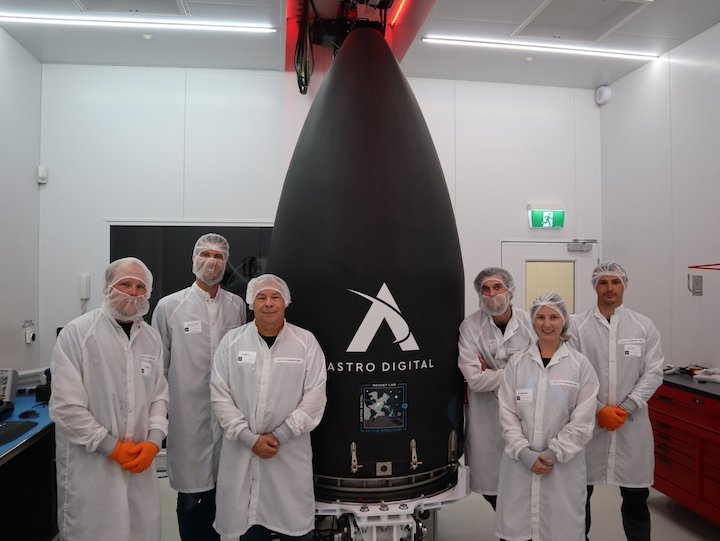
SpaceX’s Falcon 9 rocket has flown one dedicated rideshare mission to date. The SSO-A mission, arranged by launch broker Spaceflight, took off last December and lofted 64 small satellites into sun-synchronous orbit.
The SSO-A mission was successful, but not without difficulty. Spaceflight officials have said it was a challenge to fill capacity on the mission, and the launch broker said it would focus on arranging rideshare launches on smaller rockets in the future.
“It’ll be be interesting to see how SpaceX gets on as well,” Beck said. “Falcon 9 is a big vehicle to fill up with little spacecraft … So unless SpaceX launches an empty rocket, it will be quite challenging to get a full flight at a reasonable timeframe. We’ll see how it all pans out.
“It’s a different kind of customer that comes to us,” he said. “For many years, you have heard me say that we’re not going to build a bigger rocket, and it’s for this very reason. If you’re in the rideshare game, it’s impossible to compete with a platform like the Falcon 9.
“We very deliberately developed Electron as a 100 to 200-kilogram (payload) class vehicle, where you can put one microsat on there, or a couple of microsats on there, or a few 12Us (CubeSats) and deliver a constellation to exactly where it needs to be.”
Beck compared the service offered by Rocket Lab and SpaceX’s rideshare program to the difference in taking an Uber or taking a bus.
“With an Uber, you get exactly where you want to go on your timetable,” he said. “A bus maybe drops you near where you want to go. If you want an Uber, you want an Uber. You don’t want a bus.”
The Electron rocket set for launch this week, known as “Flight 9,” was originally assigned to ferry a different payload into orbit, Beck said.
“We had an original customer for Flight 9 that needed some more time to work on their spacecraft, so we moved the manifest around and moved the next customer into that position,” Beck said.
Rocket Lab did not identify the satellite that was replaced by Astro Digital’s Palisade spacecraft.
The Palisade spacecraft is launching on a technology demonstration mission. It carries an on-board propulsion system, an Astro Digital-developed communications system, and software developed by Advanced Solutions Inc., a Colorado company.
“Our team built this satellite in five months, including the complex RF (communications) payload, something we are very proud of,” said Chris Biddy, co-founder and CEO of Astro Digital.
Astro Digital has launched four small “Landmapper” CubeSats for a planned fleet of Earth observation satellites. The company has “evolved” its strategy to support a broader range of satellite missions, Biddy told Spaceflight Now.
“We were able to prove our core satellite platform technology with our first Landmapper satellites and have now expanded and evolved into supporting a diverse range of missions leveraging our experience,” Biddy said. “We started as an Earth observation company. Now we are an end-to-end mission provider supporting broad LEO-based missions.”
Rocket Lab has named this week’s mission “As The Crow Flies” as a nod to Astro Digital’s Corvus satellite platform, upon which the Palisade mission is built. Corvus is a genus of birds that includes crows.
Rocket Lab aims to close out 2019 with more launches carrying commercial satellites into orbit from the company’s New Zealand launch pad, while construction crews finish a new Electron launch facility in Virginia for a first launch there early next year, Beck said.
“There’s no way any of these missions could be rideshare,” he said. “The orbits are too unique. The requirements for the spacecraft are too unique. It’s really what we’ve developed the Electron vehicle to do.”
Quelle: SN
----
Update: 18.10.2019
.
Rocket Lab hits new heights with its eighth orbital mission
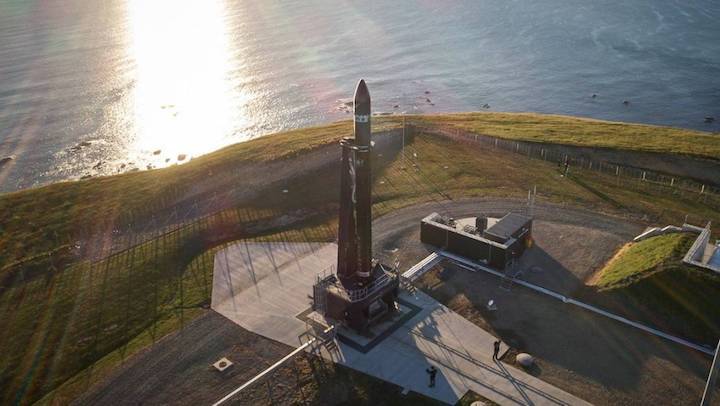
Rocket Lab has successfully completed its eighth mission to deploy satellites, the company has confirmed.
On board its rocket on Thursday was a single "microsat", which is reported to be the size of a small suitcase, built by Californian satellite manufacturer Astro Digital.
Microsats are larger than the nano satellites that have made up the bulk of the 39 satellites Rocket Lab had previously put into space.
The Electron rocket deployed the satellite at an altitude of more than 1000km, which is more than twice the altitude reached by any of its previous missions.
It was also carrying instruments that are designed to advance Rocket Lab's plan to recover and reuse the first stage of its rockets, so it can conduct more frequent launches in future.
The company eventually hopes to snag its main rocket stages using a helicopter, before they parachute into the ocean.
The latest mission successfully demonstrated upgrades to the kick stage's 3D-printed Curie engine, including the move to a bi-propellant design for improved performance, Rocket Lab said.
Its next launch is scheduled for late November.
Quelle: stuff
----
Update: 18.10.2019
.
Rocket Lab launches Astro Digital satellite
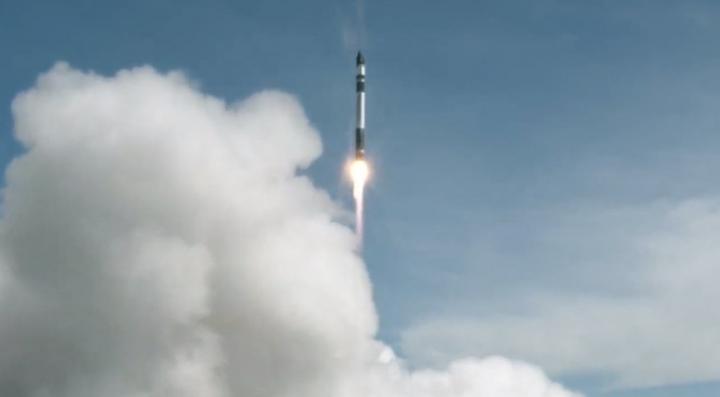
WASHINGTON — A Rocket Lab Electron rocket launched a single cubesat for Astro Digital Oct. 16, placing the satellite into a much higher orbit than previous Electron launches.
The Electron lifted off from Rocket Lab’s launch site on New Zealand’s Mahia Peninsula at 9:22 p.m. Eastern, a launch delayed two days by poor weather at the launch site, and then pushed back nearly halfway into the three-hour window by gusty upper-level winds.
The single satellite on the rocket separated from the rocket’s Curie kick stage 71 minutes after liftoff, going into a polar orbit at an altitude of more than 1,000 kilometers. That altitude is more than twice as high as previous Electron launches.
Rocket Lab said the launch took advantage of upgrades to that Curie kick stage, including a switch to a bipropellant engine for higher performance. That kick stage is also the bus for its Photon smallsat service that the company announced earlier this year.
That satellite, Palisade, is a 16U cubesat built by Astro Digital that is intended to demonstrate a satellite platform known as Corvus. The California company, originally focused on developing its own satellites for Earth imaging applications, is now offering broader smallsat manufacturing and mission design services. Palisade will test satellite propulsion and “next-generation” communications systems, as well as third-party flight control software.
Rocket Lab adjusted its launch schedule to accommodate the Astro Digital spacecraft. Rocket Lab said that it launched Palisade on this mission after another, unidentified customer originally slated for this rocket requested a delay.
The company is touting that schedule flexibility, and ability to fly to specific orbits like the one Palisade was deployed in, as the benefits of dedicated launch. Rocket Lab and other small launch vehicle developers are facing new competition from larger launch vehicle providers offering enhanced rideshare services, such as SpaceX’s smallsat rideshare initiative announced in August.
“No longer do small satellite operators have to accept the limitations of flying as a secondary payload, nor do they have to wait endlessly on the manifest of unproven launch vehicles,” Peter Beck, chief executive of Rocket Lab, said in a post-launch statement. “Frequent, responsive, and reliable launch is the new norm for small satellites thanks to Electron.”
The launch was the ninth Electron mission to date and the fifth this year as Rocket Lab pushes to increase the frequency of launches. The company said its next launch, for an undisclosed customer, is scheduled for late November.
This launch was also the first under a new “launch operator” license issued by the U.S. Federal Aviation Administration, which licenses launches for American companies regardless of launch location. The five-year license, dated Oct. 9, allows Rocket Lab to carry out a series of missions without the need to obtain a separate launch license for each one, provided the launch fits within parameters outlined in the license such as launch site and azimuth.
That new license offers a “streamlined path to orbit for our customers,” the company said in an Oct. 10 statement. “Efficient licensing supports frequent launch opportunities and truly responsive space access, and we’re thrilled to be delivering this for small sats.”
Quelle: SN
+++
Rocket Lab delivers on dedicated launch for Astro Digital
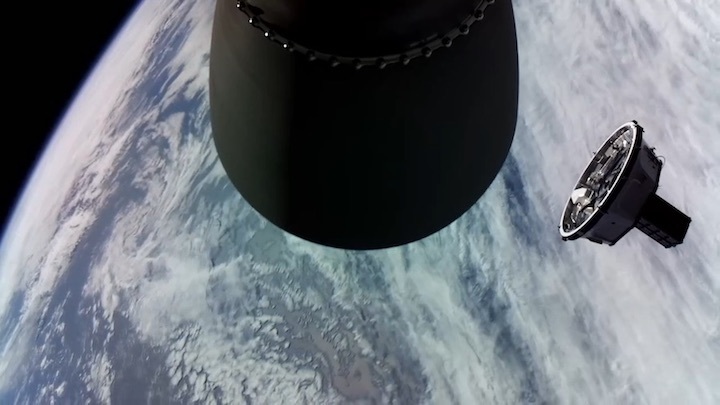
A technology demonstration microsatellite for Astro Digital rode a Rocket Lab Electron launcher into orbit Wednesday (U.S. time) from New Zealand, setting the stage for the debut of new systems on the next Electron flight as engineers move closer to retrieving and reusing the rocket’s first stage.
The 55-foot-tall (17-meter) Electron rocket fired nine Rutherford engines with nearly 50,000 pounds of thrust at 9:22 p.m. EDT Wednesday (0122 GMT Thursday) to climb off its launch pad on Mahia Peninsula, the home of Rocket Lab’s privately-run spaceport on on New Zealand’s North Island.
Liftoff occurred at 2:22 p.m. local time in New Zealand to begin Rocket Lab’s ninth Electron mission, and the fifth this year.
Heading south from the launch base, the Electron shed its nine-engine first stage around two-and-a-half minutes after liftoff. Moments later, the second stage’s single Rutherford engine ignited to continue the journey into space.
Powered by electric pumps, the Rutherford engines guided the Electron rocket into an on-target parking orbit around nine minutes into the mission, before the launcher deployed Rocket Lab’s Curie kick stage to complete the job of placing Astro Digital’s Palisade microsatellite into its final orbit.
A camera mounted to the tumbling Electron second stage beamed down dazzling live views of the Curie kick stage and the Palisade spacecraft.
Rocket Lab’s live webcast of the mission ended after the launcher reached its preliminary orbit. The company later confirmed the Curie kick stage completed its orbit adjustment maneuver, then released the Palisade satellite around 71 minutes after liftoff.
“Perfect final orbit and deployment,” tweeted Peter Beck, Rocket Lab’s CEO. “Flawless mission!”
The launch vehicle injected the Palisade spacecraft into a nearly circular polar orbit with an average altitude of around 745 miles, or 1,200 kilometers, at an inclination of 87.8 degrees, according to U.S. military tracking data.
The Curie kick stage flown on Wednesday’s mission included a performance enhancement. The kick stage’s engine previously used a single “green” non-toxic fuel — a monopropellant system, in propulsion parlance — while the upgraded engine is fed by a green bi-propellant mixture with a fuel and an oxidizer.
After releasing Astro Digital’s Palisade satellite, the Curie kick stage reignited to drop out of orbit, according to Rocket Lab.
“Just completed perfect de-orbit burn of the kick stage making sure we don’t leave junk in space for generations to come,” Beck tweeted.
The Electron rocket that launched Wednesday, known as “Flight 9,” was originally assigned to ferry a different payload into orbit, Beck said in a recent interview. Rocket Lab did not identify the satellite that was replaced by Astro Digital’s Palisade spacecraft.
“Congratulations to the Astro Digital team for readying the spacecraft and taking advantage of an earlier launch opportunity,” Beck said in a post-launch press release. “Our teams worked closely to deliver a flawless mission in a demonstration of the truly responsive space launch that small satellites need.”
Rocket Lab was the first in a new wave of startup launch companies to enter commercial operations with a small satellite launch vehicle. The Electron rocket, with a base price of $5.7 million, is sized to carry up to 330 pounds (150 kilograms) into a 310-mile-high (500-kilometer) sun-synchronous orbit, allowing small satellite operators to buy dedicated rides to space rather than purchasing excess capacity on a larger launcher.
“No longer do small satellite operators have to accept the limitations of flying as a secondary payload, nor do they have to wait endlessly on the manifest of unproven launch vehicles,” Beck said. “Frequent, responsive, and reliable launch is the new norm for small satellites thanks to Electron.”
Rocket Lab aims to debut an upgraded Electron first stage on the company’s next mission, set for late November.
The first stage on the next Electron rocket, designated Flight 10, will feature several changes to help Rocket Lab prepare for an eventual attempt to recover the booster with a helicopter on a future flight. Rocket Lab announced in August plans to retrieve and reuse Electron first stages, primarily to achieve a planned cadence of one launch per week.
Rocket Lab determined production bottlenecks were a major factor inhibiting such a rapid launch rate. Reusing rockets could ease the burden on Rocket Lab’s factories in New Zealand and California, the company says.
The company installed a data recorder on an Electron rocket launched in August to collect information on the environments the first stage sees when it comes back to Earth, before eventually breaking apart in the atmosphere.
Beck told Spaceflight Now in a recent interview that the data obtained during the August launch showed that designing the Electron first stage to survive re-entry will be difficult.
“We knew it’s hard, but we certainly learned that it is hard,” Beck said. “We did get some good initial data from the flight (in August), but really Flight 10 is where it’s all going to happen. That’s where we’re pushing really deep with the stage. That stage has a full telemetry system, there’s RCS (reaction control system thrusters) to guide it into the entry corridor. We expect to go quite deep (into the atmosphere) with that flight.”
The next Electron launch will not carry a decelerator or a parachute. Those systems will be installed on later rockets to enable a recovery of the booster first from the ocean, then via helicopter, Beck said.
“It’s purely to just punch it into the atmosphere, fully guided, as deep as we can and gather data,” he said. “Flight 10 is about pushing it deep into the atmosphere and really understanding the hypersonic flow and the heating regime.”
SpaceX uses cold gas thrusters to re-orient its Falcon 9 first stages, then reignites a subset of the Falcon 9’s Merlin engines to slow down for propulsive landings, using thrust and grid fins to steer it back to a drone ship at sea or toward an onshore recovery site.
Rocket Lab is taking a different approach.
Because the Electron rocket is much smaller than the Falcon 9, there’s not enough leftover propellant to attempt a propulsive landing.
“We don’t intend to use grid fins,” Beck said. “We have other types of measures. The most important thing on this (next) one is the active guidance with the RCS and making sure we maintain a really tight corridor with the base heat shield first, and just push it as deep as we can go.”
The Palisade spacecraft launched Wednesday — about the size of a small suitcase — is designed for a technology demonstration mission, according to Astro Digital, a company based in Silicon Valley. It carries an on-board propulsion system, an Astro Digital-developed communications system, and software developed by Advanced Solutions Inc., a Colorado company.
“Our team built this satellite in five months, including the complex RF (communications) payload, something we are very proud of,” said Chris Biddy, co-founder and CEO of Astro Digital.
The company did not provide details on the type of communications technology it will test on the Palisade satellite, or the services the payload could provide to customers.
Astro Digital has launched four small “Landmapper” CubeSats for a planned fleet of Earth observation satellites. The company has “evolved” its strategy to support a broader range of satellite missions, Biddy told Spaceflight Now.
“We were able to prove our core satellite platform technology with our first Landmapper satellites and have now expanded and evolved into supporting a diverse range of missions leveraging our experience,” Biddy said. “We started as an Earth observation company. Now we are an end-to-end mission provider supporting broad LEO-based missions.”
Rocket Lab named Wednesday’s mission “As The Crow Flies” as a nod to Astro Digital’s Corvus satellite platform, upon which the Palisade mission is built. Corvus is a genus of birds that includes crows.
Quelle: SN
+++
‘Flawless’ launch
NZ Space Agency says it expects defence and security payloads with operational functions
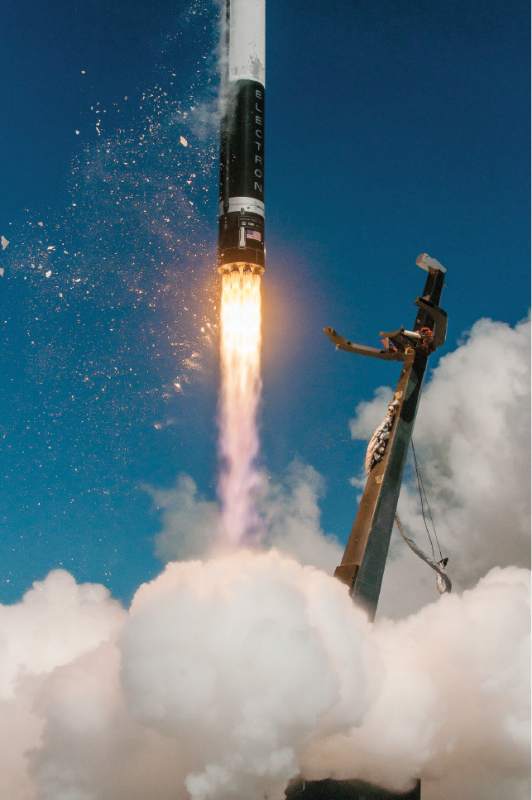
Rocket Lab yesterday completed a “flawless” mission to put a satellite into orbit from Mahia, bringing the total number it has sent into space to 40.
Yesterday’s mission, named As The Crow Flies, lifted off from Rocket Lab Launch Complex 1 at Onenui Station at 2.22pm and “continues the company’s track record of 100 percent mission success for customers”, Rocket Lab said in a statement.
“Approximately 71 minutes after lift-off, Electron’s Kick Stage deployed the payload to a circular orbit of more than 1000km — more than twice the altitude of any Electron mission to date.”
“The spacecraft on board was a Palisade technology demonstration satellite — a 16U CubeSat with on-board propulsion and next-generation communications systems developed by Astro Digital . . .”
Rocket Lab chief executive Peter Beck said on Twitter that it was a “flawless mission”.
Rocket Lab’s next mission is scheduled for lift-off from Launch Complex 1 from late November.
The latest launch came a week after the New Zealand Space Agency released information about previous satellite payloads approved for launch by Rocket Lab from its Mahia complex.
The information released includes the payload owner by country and organisation, the purpose of the satellite and its type. Payload information will be released quarterly from now on.
Dr Peter Crabtree, head of the NZ Space Agency at the Ministry of Business, Innovation and Employment, said New Zealand had attracted interest from around the world. Since applications began in 2017 to August 31, this year, the agency recommended 34 payload permits for approval by the Minister for Economic Development, including 12 from governments, 13 from commercial businesses, eight from academic institutes and one from a non-profit organisation.
To date, most of the payload permits had been issued for organisations in the United States (25). Payloads from the governments of Australia, Mexico, France and Singapore were also approved.
Payload missions have primarily been for research and development, Earth observation and technology demonstration.
The NZ Space Agency anticipates that in time the diversity of payloads will include defence and security payloads with operational functions.
As well as their direct applications, such payloads often led to major civilian applications — for example, GPS was designed, built and funded by the US Air Force as a military navigation system and now supported the technology we use every day, Dr Crabtree said.
“We have a robust legal and regulatory system in place that allows us to maximise the opportunities of space and manage any risks.
“This means we are able to welcome applications from a wide range of customers, from space agencies to private companies to defence and security agencies of our strategic partners. There is a wealth of organisations developing cutting-edge technology that can make a major difference to the lives of millions of people.”
Rocket Lab head of communications Morgan Bailey told The Gisborne Herald the company had launched a diverse range of satellites that “enable new science and innovation to be undertaken on orbit, leading to crucial services and data that we rely on in our day-to-day lives”.
“Many of these technologies are funded and operated by the defence sector, such as GPS (Global Positioning System), which is operated by the US Air Force. An example of a Rocket Lab-launched payload from the defence sector is the Falcon ODE CubeSat from the US Air Force launched in May 2019. This satellite was designed to help evaluate new ways of tracking space junk on orbit — a crucial requirement for the safe and sustainable management of space as more satellites are launched in the coming years.
“Rocket Lab is committed to the safe and responsible use of space.”
Details of previously unannounced payloads made public by the Space Agency included a mini CubeSat from the New Mexico Institute of Mining and Technology containing three space weather instruments; a plasma probe, magnetometers and GPS occultation experiment technology, as well as an electrical monitoring system and optical status beacon. Its primary mission was stated as educational, providing students with hands-on experience designing and building the satellite.
A payload from the Mexico Secretariat of National Defence (SEDENA) was also approved for launch. It was equipped with four “web-camera-like” sensors for remote imaging — which would only be made available to SEDENA and students involved in a training programme designed to enable them to conduct digital image processing and software improvement experiments as part of their study.
Quelle: The Gisborne Herald

